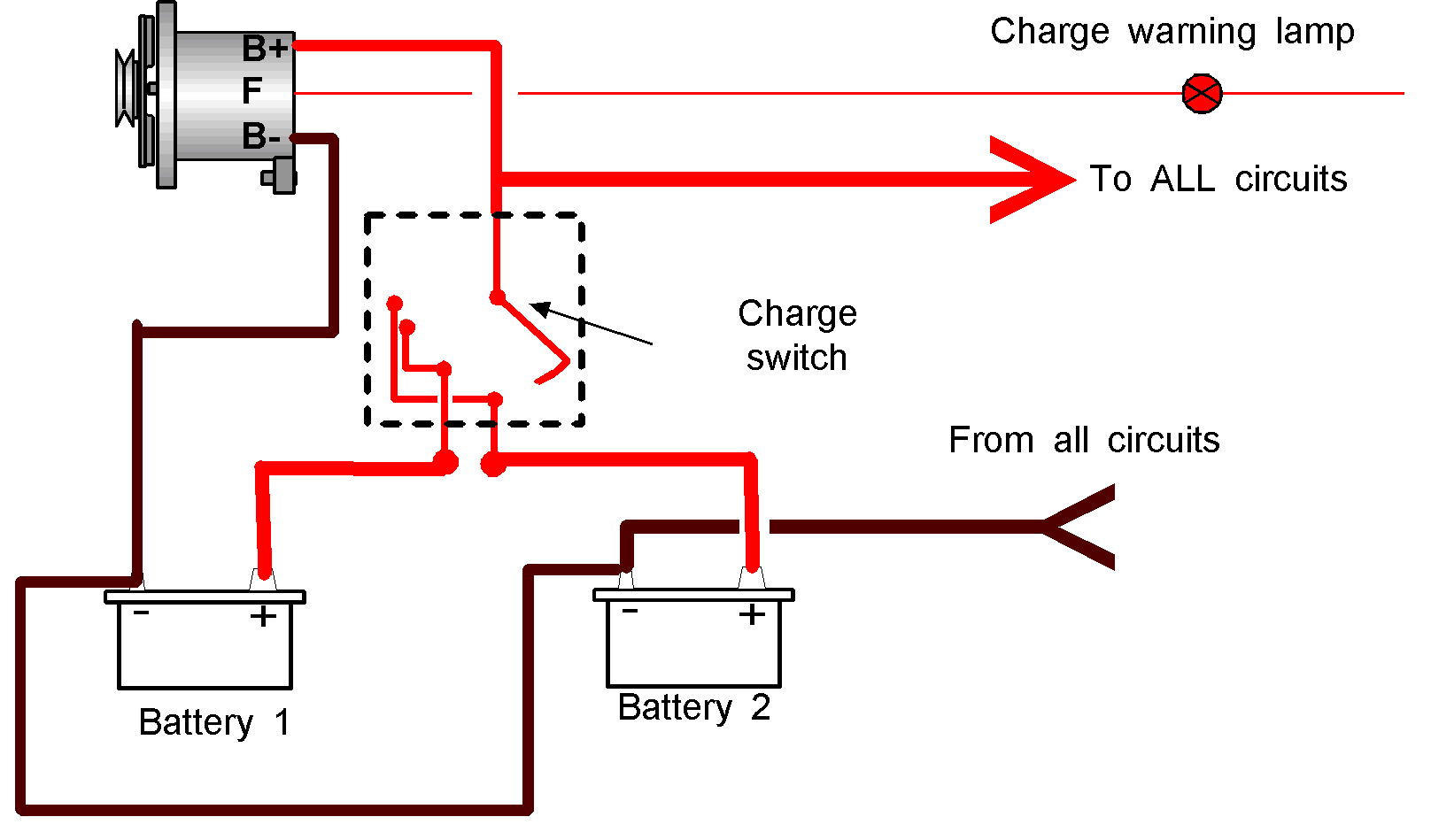SPLIT BATTERY BANKS
In this system the boat has two battery banks either of which may be used to supply all loads. The loads and also charging can be switched to Battery1, Battery2, or Both,
This system is illustrated below
This looks a very simple system, which is perhaps why yachts tend to use it, but it has some potential problems.

Operation
The switch is set to either Bat1 or Bat 2 (whichever is most charged) and the engine is started. At some time, determined by the boater, the switch is re-positioned to charge either the other battery or both batteries. Upon turning the engine off the boater decide which battery to use to supply the domestic power.
Problems
- Ideally each battery would be of a different type – a starting battery and a deep cycle battery – to maximise battery life, but this is difficult if you can use either battery for either purpose.
- It is still all too easy to leave the switch set to BOTH and flatten both batteries so the engine can not be started.
- Turning the switch off with the engine running or the switch breaking before making may well destroy the electronics inside the alternator.
- Both battery banks have to be large enough to cope with the domestic load unless the boater designates, AND ALWAYS USES, one bank as the engine bank and one domestic/service bank.
Advantages
- The big red switch can act as the master switch
- Simple wiring
- There is an outside chance that if the switch was turned off or broke before make with the engine running the domestic and engine loads might just be enough to damp the resultant voltage surge and protect the alternator, but do not bank on it!
I have placed this in the appendix because I am sure there are far more reliable systems and this one should be consigned to history.
